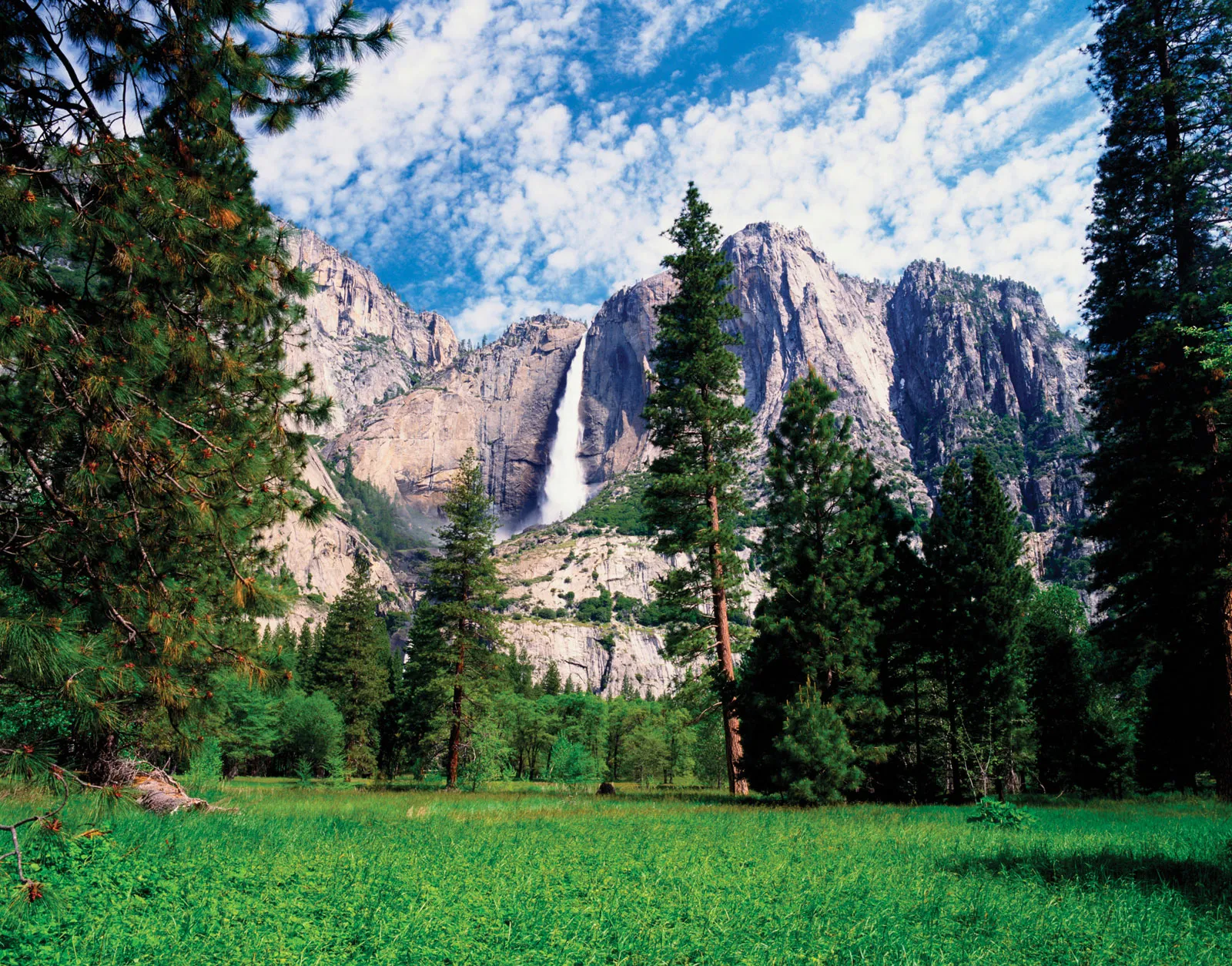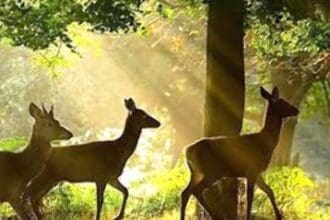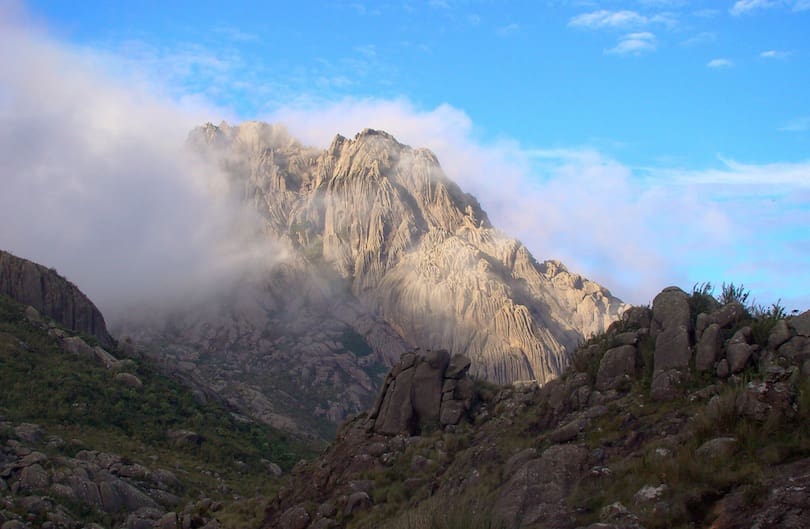Jharkhand, a state nestled in the eastern part of India, is renowned for its rich cultural heritage, tribal communities, and stunning natural landscapes. The state is home to lush forests, rolling hills, cascading waterfalls, and diverse wildlife. For nature enthusiasts and adventure seekers, Jharkhand’s national parks offer an unparalleled opportunity to explore its pristine wilderness. In this article, we will delve into the top 5 national parks in Jharkhand , highlighting their unique features, biodiversity, activities, and travel tips.
1. Betla National Park: A Wildlife Haven
Overview
Betla National Park , located in the Palamu district of Jharkhand, is one of the oldest and most popular national parks in the state. Declared a national park in 1986, it spans over 226 square kilometers and is part of the larger Palamu Tiger Reserve. The park is named after the “betel” plant, which grows abundantly in the region. It is also one of the first national parks in India to be declared a Project Tiger reserve, making it a significant hub for tiger conservation efforts.
Flora and Fauna
The park boasts a mix of sal forests , bamboo groves, and grasslands, creating a diverse habitat for wildlife. Some of the key species found here include:
Mammals
- Royal Bengal Tigers : Although sightings are rare, the park is home to a small population of tigers. Conservation efforts have been ongoing to increase their numbers.
- Indian Elephants : Large herds of elephants can often be spotted during safaris, especially near water sources.
- Leopards : These elusive predators are frequently seen in the dense forests, particularly during early mornings or late evenings.
- Sloth Bears : Known for their shaggy coats, sloth bears are commonly encountered near termite mounds and honeycombs.
- Sambar Deer and Chital : These herbivores thrive in the park’s open grasslands and are often seen grazing peacefully.
- Wild Boars : Omnivorous and abundant, wild boars play a vital role in seed dispersal and maintaining ecological balance.
Birds
Over 170 bird species have been recorded in Betla National Park, making it a paradise for birdwatchers. Some notable avian residents include:
- Indian Peafowl (Peacock) : The national bird of India, peacocks are a common sight, especially during the breeding season when males display their vibrant plumage.
- Hornbills : Both Indian grey hornbills and Malabar pied hornbills are occasionally spotted.
- Eagles : Crested serpent eagles and changeable hawk-eagles soar high above the treetops.
- Parakeets : Rose-ringed parakeets add splashes of color to the forest canopy.
Reptiles
The sanctuary hosts various reptile species, including:
- Indian Rock Pythons : Non-venomous and powerful, these snakes are apex predators within their niche.
- Monitor Lizards : Often seen basking near water sources, monitor lizards are opportunistic feeders.
- Cobras : Spectacled cobas and Russell’s vipers are venomous species that inhabit the sanctuary.
Activities
- Jeep Safaris : Explore the park’s interiors on guided jeep safaris, which take you through tiger trails and elephant corridors. Safaris typically last 2-3 hours and cover key zones where animals are frequently spotted.
- Elephant Rides : Enjoy a unique perspective of the park atop an elephant. Elephant rides are available for short durations and provide a closer look at the park’s flora and fauna.
- Trekking : Several trekking trails lead to scenic viewpoints and waterfalls within the park. Popular routes include treks to the Betla Fort and the picturesque waterfalls nearby.
- Camping : Set up camp under the stars and experience the tranquility of the jungle. Camping facilities are available with prior permission from the Forest Department.
- Photography : Capture the beauty of the park’s landscapes and wildlife. Bring a zoom lens to capture distant subjects without disturbing them.
Best Time to Visit
The ideal time to visit Betla National Park is from November to February , when the weather is cool and pleasant. During this period, animals are more active, and visibility is excellent. Monsoon season (July to September) transforms the park into a lush green haven, but heavy rains may disrupt travel plans.
How to Reach
- By Air : The nearest airport is Ranchi Airport , approximately 170 kilometers away. From there, you can hire a taxi or take a bus to reach the park.
- By Train : The closest railway station is Daltonganj Railway Station , about 25 kilometers from the park. Several trains connect Daltonganj to major cities like Ranchi and Patna.
- By Road : Regular buses and taxis operate from Daltonganj to nearby towns and cities. The drive offers scenic views of the countryside and glimpses of rural life.
2. Hazaribagh National Park: A Serene Escape
Overview
Located in the Hazaribagh district, Hazaribagh National Park covers an area of 184 square kilometers and is known for its serene environment and picturesque landscapes. Established in 1954, the park offers a peaceful retreat for those seeking solitude amidst nature. Its name translates to “a thousand gardens,” reflecting its lush greenery and abundant flora.
Flora and Fauna
The park is dominated by sal and bamboo forests , interspersed with open meadows and rocky outcrops. Its diverse ecosystem supports a wide range of wildlife, including:
Mammals
- Wild Boars : Often seen foraging in the undergrowth, wild boars are abundant and play a crucial role in seed dispersal.
- Chitals and Sambar Deer : Grazing in the open grasslands, these herbivores are a common sight during safaris.
- Sloth Bears : Frequently spotted near termite mounds, sloth bears are an integral part of the park’s ecosystem.
- Leopards : Though elusive, they play a vital role in maintaining ecological balance by controlling prey populations.
Birds
Over 100 bird species have been recorded in Hazaribagh National Park, adding vibrancy to the park. Some notable avian residents include:
- Peacocks : Graceful and colorful, peacocks are often seen displaying their plumage.
- Parakeets : Both rose-ringed and blossom-headed parakeets add splashes of color to the forest.
- Kingfishers : Pied kingfishers and white-throated kingfishers can be seen near water bodies.
Reptiles
The park is home to various reptile species, including monitor lizards, pythons, and cobras.
Activities
- Nature Walks : Guided walks allow visitors to observe flora and fauna up close. Trained naturalists share fascinating insights about the local ecosystem.
- Birdwatching : The park’s avian diversity makes it a hotspot for bird enthusiasts. Early mornings and late afternoons are the best times for spotting birds.
- Photography : Capture the beauty of the park’s landscapes and wildlife. Bring a zoom lens to capture distant subjects without disturbing them.
- Picnics : Designated picnic spots near lakes provide a relaxing atmosphere. Enjoy a meal surrounded by nature or simply relax under the shade of towering trees.
Best Time to Visit
The best time to visit Hazaribagh National Park is from October to March , when the climate is mild and conducive to outdoor activities. Monsoon season (July to September) transforms the park into a lush green paradise, but heavy rains may disrupt travel plans.
How to Reach
- By Air : The nearest airport is Ranchi Airport , about 90 kilometers away. From there, you can hire a taxi or take a bus to reach the park.
- By Train : Hazaribagh Town Railway Station is well-connected to major cities like Ranchi and Patna. Several trains connect Hazaribagh to nearby towns.
- By Road : State-run buses and private taxis operate regularly from Hazaribagh to nearby towns. The drive offers scenic views of the countryside and glimpses of rural life.
3. Dalma Wildlife Sanctuary: A Tribal Paradise
Overview
Situated near Jamshedpur in the East Singhbhum district, Dalma Wildlife Sanctuary spans over 195 square kilometers and is surrounded by the majestic Dalma Hills. The sanctuary is not only a haven for wildlife but also a cultural hub due to its proximity to tribal villages. Its name is derived from the Dalma Hills, which form the backdrop of the sanctuary.
Flora and Fauna
The sanctuary is covered with dense sal and mixed deciduous forests , providing shelter to a variety of animals:
Mammals
- Elephants : Large herds migrate through the sanctuary, especially during the dry season. Elephant sightings are a highlight for visitors.
- Leopards : These stealthy cats are occasionally spotted in the forested areas, particularly during early mornings or late evenings.
- Bison : Also known as gaur, these massive herbivores roam freely in the sanctuary.
- Deer Species : Spotted deer and barking deer are common sights, often seen grazing in the open areas.
- Sloth Bears : Frequently encountered near termite mounds and honeycombs.
Birds
The sanctuary is home to numerous bird species, including:
- Peafowl : Graceful and colorful, peacocks are often seen displaying their plumage.
- Hornbills : Both Indian grey hornbills and Malabar pied hornbills are occasionally spotted.
- Parakeets : Rose-ringed parakeets add splashes of color to the forest canopy.
Reptiles
The sanctuary hosts various reptile species, including monitor lizards, pythons, and cobras.
Activities
- Trekking : Explore the Dalma Hills and enjoy panoramic views of the surrounding valleys. Popular trekking routes lead to scenic viewpoints and waterfalls.
- Elephant Sightings : Witness herds of elephants migrating through the sanctuary. Elephant corridors are monitored to ensure safe passage for these gentle giants.
- Cultural Tours : Visit nearby tribal villages to learn about their traditions and crafts. Interact with locals and gain insights into their way of life.
- Waterfall Visits : Nearby waterfalls like Subarnarekha Falls offer refreshing breaks. Enjoy picnics and photography sessions amidst the cascading waters.
Best Time to Visit
The ideal time to visit Dalma Wildlife Sanctuary is from November to February , when the weather is pleasant and visibility is excellent. Monsoon season (July to September) transforms the sanctuary into a lush green haven, but heavy rains may disrupt travel plans.
How to Reach
- By Air : The nearest airport is Jamshedpur Sonari Airport , approximately 20 kilometers away. From there, you can hire a taxi or take a bus to reach the sanctuary.
- By Train : Tatanagar Junction is the closest railway station, located just 10 kilometers from the sanctuary. Several trains connect Tatanagar to major cities like Ranchi and Kolkata.
- By Road : Regular buses and taxis operate from Jamshedpur to Dalma Wildlife Sanctuary. The drive offers scenic views of the countryside and glimpses of rural life.
4. Lawalong Wildlife Sanctuary: A Hidden Gem
Overview
Nestled in the Chatra district, Lawalong Wildlife Sanctuary spans over 211 square kilometers and remains relatively unexplored compared to other national parks in Jharkhand. Its untouched beauty and abundant wildlife make it a hidden gem for nature lovers. The sanctuary is named after the Lawalong village, which lies near its entrance.
Flora and Fauna
The sanctuary is characterized by sal and bamboo forests , along with patches of grasslands. It harbors a rich variety of wildlife, including:
Mammals
- Tigers : Though sightings are rare, tigers are believed to inhabit the sanctuary. Conservation efforts are underway to increase their population.
- Leopards : These agile predators are often seen prowling the forest edges, particularly during early mornings or late evenings.
- Sloth Bears : Known for their distinctive appearance, sloth bears are frequently encountered near termite mounds and honeycombs.
- Deer Species : Chital and sambar deer graze peacefully in the open areas.
- Wild Boars : Abundant and active throughout the sanctuary, wild boars play a crucial role in seed dispersal.
Birds
Over 150 bird species have been recorded in Lawalong Wildlife Sanctuary, adding vibrancy to the park. Some notable avian residents include:
- Peafowl : Graceful and colorful, peacocks are often seen displaying their plumage.
- Hornbills : Both Indian grey hornbills and Malabar pied hornbills are occasionally spotted.
- Parakeets : Rose-ringed parakeets add splashes of color to the forest canopy.
Reptiles
The sanctuary hosts various reptile species, including monitor lizards, pythons, and cobras.
Activities
- Jungle Safaris : Jeep safaris take you deep into the sanctuary’s core zones, allowing you to witness wildlife up close. Safaris typically last 2-3 hours and cover key zones where animals are frequently spotted.
- Birdwatching : Spot colorful birds like peacocks, parakeets, and eagles. Early mornings and late afternoons are the best times for spotting birds.
- Nature Photography : Capture the sanctuary’s untouched landscapes and wildlife. Bring a zoom lens to capture distant subjects without disturbing them.
- Exploration : Discover lesser-known trails and hidden waterfalls. Popular trekking routes lead to scenic viewpoints and waterfalls.
Best Time to Visit
The best time to visit Lawalong Wildlife Sanctuary is from November to March , when the weather is favorable for exploration. Monsoon season (July to September) transforms the sanctuary into a lush green haven, but heavy rains may disrupt travel plans.
How to Reach
- By Air : The nearest airport is Ranchi Airport , about 120 kilometers away. From there, you can hire a taxi or take a bus to reach the sanctuary.
- By Train : Chatra Railway Station is the closest railhead, located approximately 30 kilometers from the sanctuary. Several trains connect Chatra to nearby towns.
- By Road : State-run buses and private taxis operate regularly from Chatra to nearby towns. The drive offers scenic views of the countryside and glimpses of rural life.
5. Koderma Wildlife Sanctuary: A Biodiversity Hotspot
Overview
Located in the Koderma district, Koderma Wildlife Sanctuary spans over 180 square kilometers and is a treasure trove of biodiversity. The sanctuary is known for its rugged terrain, rocky outcrops, and dense forests. Its name is derived from the Koderma town, which lies near its entrance.
Flora and Fauna
The sanctuary is predominantly covered by dry deciduous forests , supporting a wide array of wildlife:
Mammals
- Leopards : These big cats are the apex predators of the sanctuary, often seen prowling the forest edges.
- Sloth Bears : Known for their distinctive appearance, sloth bears are frequently encountered near termite mounds and honeycombs.
- Wild Boars : Abundant and active throughout the sanctuary, wild boars play a crucial role in seed dispersal.
- Deer Species : Chital and sambar deer graze peacefully in the open areas.
- Porcupines : Nocturnal and elusive, porcupines are occasionally spotted during night safaris.
Birds
Over 150 bird species have been recorded in Koderma Wildlife Sanctuary, adding vibrancy to the park. Some notable avian residents include:
- Peafowl : Graceful and colorful, peacocks are often seen displaying their plumage.
- Hornbills : Both Indian grey hornbills and Malabar pied hornbills are occasionally spotted.
- Parakeets : Rose-ringed parakeets add splashes of color to the forest canopy.
Reptiles
The sanctuary hosts various reptile species, including monitor lizards, pythons, and cobras.
Activities
- Rock Climbing : The rocky terrain offers opportunities for climbing enthusiasts. Popular routes lead to scenic viewpoints and waterfalls.
- Wildlife Safaris : Jeep safaris allow you to explore the sanctuary’s diverse habitats. Safaris typically last 2-3 hours and cover key zones where animals are frequently spotted.
- Birdwatching : Observe and photograph a variety of bird species. Early mornings and late afternoons are the best times for spotting birds.
- Nature Walks : Discover the sanctuary’s flora and fauna on foot. Trained naturalists share fascinating insights about the local ecosystem.
Best Time to Visit
The ideal time to visit Koderma Wildlife Sanctuary is from October to February , when the weather is cool and comfortable. Monsoon season (July to September) transforms the sanctuary into a lush green haven, but heavy rains may disrupt travel plans.
How to Reach
- By Air : The nearest airport is Gaya Airport , approximately 150 kilometers away. From there, you can hire a taxi or take a bus to reach the sanctuary.
- By Train : Koderma Railway Station is well-connected to major cities like Ranchi and Patna. Several trains connect Koderma to nearby towns.
- By Road : Regular buses and taxis operate from Koderma to nearby towns. The drive offers scenic views of the countryside and glimpses of rural life.
Travel Tips for Exploring Jharkhand’s National Parks
- Permits : Obtain prior permission from the Forest Department before entering any national park or sanctuary. Permits can be arranged through authorized tour operators or directly at the entry gate.
- Guides : Hire certified guides for safaris and treks to ensure safety and enhance your experience. Guides are knowledgeable about animal behavior and can help locate wildlife.
- Clothing : Wear comfortable, earth-toned clothing to blend with the surroundings and avoid startling animals. Long sleeves and pants protect against thorns and insects.
- Footwear : Sturdy shoes are essential for walking on uneven terrains. Avoid flip-flops or sandals.
- Food and Water : Carry snacks and plenty of water, as facilities inside the parks are limited. Pack energy bars, fruits, and sandwiches for quick bites.
- Respect Wildlife : Maintain a safe distance from animals and refrain from littering. Never feed wild animals, as it disrupts their natural diet and behavior.
Conclusion
Jharkhand’s national parks and wildlife sanctuaries offer a unique blend of natural beauty, biodiversity, and cultural richness. From the iconic Betla National Park to the serene Hazaribagh National Park , each destination provides a distinct experience for travelers. Whether you’re embarking on a thrilling safari, trekking through lush forests, or immersing yourself in tribal culture, these parks promise unforgettable memories. By visiting responsibly and supporting conservation efforts, we can help preserve Jharkhand’s incredible ecosystems for future generations.
FAQs
- Which is the best national park in Jharkhand?
- Betla National Park is widely regarded as the best due to its diverse wildlife and well-developed infrastructure.
- Are there tigers in Jharkhand’s national parks?
- Yes, Betla National Park and Lawalong Wildlife Sanctuary have populations of Royal Bengal Tigers, though sightings are rare.
- What is the entry fee for Betla National Park?
- Entry fees vary depending on nationality and age. Indians typically pay ₹50-₹100, while foreigners pay ₹200-₹300.
- Can I see elephants in Jharkhand’s parks?
- Yes, large herds of elephants can be spotted in Betla National Park and Dalma Wildlife Sanctuary.
- Is camping allowed in these national parks?
- Camping is permitted only in designated areas with prior approval from the Forest Department.
- What is the best time to visit Jharkhand’s national parks?
- The ideal time is from November to February, when the weather is cool and pleasant.
- Are safaris included in the entry fee?
- No, safaris require an additional charge, usually ranging from ₹500 to ₹1,000 per person.
- How do I reach Betla National Park?
- The nearest airport is Ranchi Airport, and the closest railway station is Daltonganj Railway Station.
- Are there accommodation options near these parks?
- Forest rest houses, guesthouses, and hotels are available near most parks.
- What should I bring for a jungle safari?
- Binoculars, camera, sunscreen, hat, insect repellent, and water bottles are recommended.















